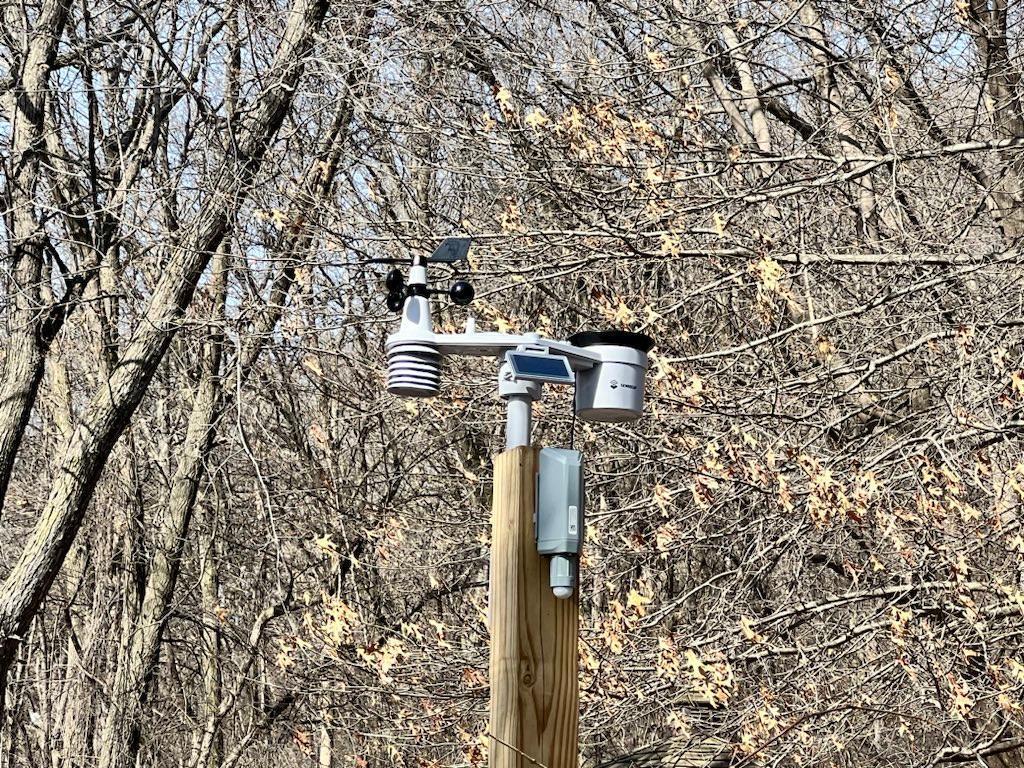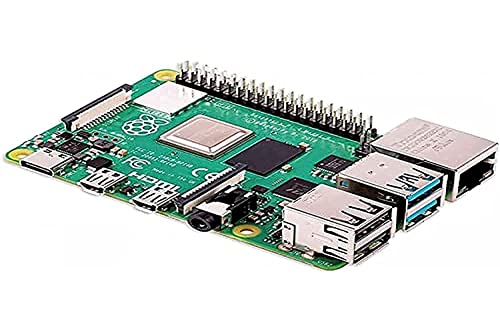 Recently, I purchased a SenseCAP 8-in-1 LoRaWAN Weather Station. This weather station is designed for long-term outdoor use and is capable of monitoring eight environmental parameters. The SenseCAP 8-in-1 LoRaWAN Weather Station is a versatile and efficient environmental monitoring solution developed by Seeed Studio. The weather station is designed to provide reliable information for applications such as smart agriculture, environmental research, and weather forecasting.
Recently, I purchased a SenseCAP 8-in-1 LoRaWAN Weather Station. This weather station is designed for long-term outdoor use and is capable of monitoring eight environmental parameters. The SenseCAP 8-in-1 LoRaWAN Weather Station is a versatile and efficient environmental monitoring solution developed by Seeed Studio. The weather station is designed to provide reliable information for applications such as smart agriculture, environmental research, and weather forecasting.
The SenseCAP Weather Station leverages the LoRaWAN protocol for data transmission. LoRaWAN is a low-power, wide-area network (LPWAN) technology that enables long-range communication with minimal power consumption. By utilizing LoRaWAN, the weather station can operate autonomously for extended periods, reducing maintenance requirements and ensuring continuous data collection. The LoRaWAN protocol also provides secure and reliable communication, making it an ideal choice for outdoor applications that require robust connectivity.
I wrote about LoRaWAN + Helium in a previous post. LoRaWAN is an ideal choice for IoT applications that require long-range communication and low power consumption. The SenseCAP Weather Station is designed to take advantage of these benefits, making it an excellent choice for outdoor environmental monitoring. I happen to continue to "mine" the cryptocurrency Helium, which provides me with a ready-made LoRaWAN network to connect the weather station (and other sensors) to. Connecting the SenseCAP 8-in-1 LoRaWAN Weather Station to the Helium network offers numerous benefits and expands the possibilities for environmental monitoring.
Helium is a decentralized, blockchain-based network that enables the deployment of IoT devices and sensors on a global scale. By integrating the SenseCAP Weather Station with the Helium network, users can take advantage of its vast coverage and robust infrastructure. The Helium network's unique incentive model encourages the growth of the network by rewarding participants who provide coverage and maintain the network's integrity. This incentive-driven approach ensures the network's reliability and scalability, making it an ideal choice for deploying weather stations in various locations. Moreover, the Helium network's encryption and security features protect the data transmitted by the SenseCAP Weather Station, ensuring the integrity and confidentiality of the collected information. Not that I am overly concerned about the data collected by the weather station, but it is nice to know that the data is secure.
The eight sensors included in the SenseCAP Weather Station are:
- Temperature sensor
- Humidity sensor
- Barometric pressure sensor
- Light intensity sensor
- UV sensor
- Wind speed sensor
- Wind direction sensor
- Rain gauge
These sensors work together to provide a detailed understanding of the environment, allowing users to monitor and analyze atmospheric conditions in real-time. The data collected by the weather station can be used to identify trends, detect anomalies, and make informed decisions based on the observed patterns.
SenseCAP provides a web console and mobile app for configuring and monitoring the weather station. The web console offers data visualization tools and analytics features that enable users to explore the collected data and gain insights into the environmental conditions. The mobile app allows for the configuration of the weather station. You need this app to not only configure the weather station but also to get the connection parameters to connect the weather station to the Helium network.
Because of how I wanted to use the data from the weather station, I opted to not use the SenseCAP web console, instead, I used the Helium Console to "attach" the weather station to the Helium network. This allows me to use the Helium API to pull the data from the weather station and use it in my own applications. You can see the current state of the weather in my backyard by visiting this link.
Some technical bits before I continue with the story. The SenseCAP 8-in-1's data is transmitted via LoRaWAN over the Helium Network, the device is registered in the Helium Console (using the values obtained from the mobile app). From there, the data packets are routed to Amazon Web Services' IoT Core service where a Lambda function is triggered to process the data and store it in a PostgreSQL TimescaleDB database. There is another Lambda function that is written in Python, and uses Flask to provide a RESTful API to access the data in the database. The bulk of the data manipulation happens in JavaScript on the aforementioned local weather page. The data is updated every 5 minutes. Many of the metrics on that page are also derived from the weather station data. For example, the "Dew Point" is calculated from the temperature and humidity data. The "Apparent Temperature" is calculated from the temperature, humidity, and wind speed data. The "Heat Index" is calculated from the temperature and humidity data. The "Wind Chill" is calculated from the temperature and wind speed data. And so on. If you do not see "Heat Index," it is most likely because it is not hot enough to calculate it.
The SenseCAP 8-in-1 LoRaWAN Weather Station is a technically advanced device that incorporates a range of high-precision sensors to provide accurate and reliable environmental data. The weather station is equipped with a Sensirion SHT30 temperature and humidity sensor, which offers a temperature accuracy of ±0.2°C and a humidity accuracy of ±2% RH. This sensor ensures that the collected temperature and humidity data is precise and consistent, enabling users to make informed decisions based on the measurements. The barometric pressure sensor, a Bosch BMP280, provides an accuracy of ±1 hPa, allowing for accurate monitoring of atmospheric pressure changes. The light intensity sensor, a Vishay VEML7700, has a spectral range of 400-900nm and an accuracy of ±5%, making it suitable for measuring ambient light conditions. The UV sensor, a Vishay VEML6075, detects both UVA and UVB radiation with an accuracy of ±10%, providing valuable information for assessing UV exposure levels.
The wind speed and direction sensors are key components of the SenseCAP Weather Station. The wind speed sensor, an Optoelectronics Technology Company (OETC) FST200-201, is a 3-cup anemometer with a measurement range of 0-50 m/s and an accuracy of ±3%. The wind direction sensor, also from OETC (FX2001), utilizes a wind vane design and provides a measurement range of 0-360° with an accuracy of ±5°. These sensors enable the weather station to capture detailed wind data, which is essential for understanding local weather patterns and predicting potential changes. The rain gauge, a tipping bucket design, has a resolution of 0.2mm per tip and an accuracy of ±4%, allowing for precise measurement of precipitation levels. Lastly, the CO2 sensor, a Sensirion SCD30, measures atmospheric carbon dioxide concentrations with an accuracy of ±(30ppm + 3%) and a measurement range of 400-10,000ppm, providing insights into air quality and environmental conditions.
The device's LoRaWAN connectivity is facilitated by a Semtech SX1262 chipset, which provides long-range, low-power communication. The SenseCAP Weather Station supports both the 915MHz and 868MHz frequency bands, making it compatible with LoRaWAN networks worldwide. The device's enclosure is made of durable, weather-resistant ABS plastic, with an IP65 rating that ensures protection against dust and water ingress. The compact design, measuring 190mm x 120mm x 145mm and weighing approximately 1kg, makes the weather station easy to deploy and install in various locations. Overall, the SenseCAP 8-in-1 LoRaWAN Weather Station's impressive array of technical specifications and features make it a reliable and efficient tool for environmental monitoring and data collection.
Integrating the SenseCAP 8-in-1 LoRaWAN Weather Station with AWS IoT and AWS Lambda can significantly enhance data processing, storage, and analysis capabilities. AWS IoT is a robust platform that enables secure communication between IoT devices and the AWS Cloud. By connecting the SenseCAP Weather Station to AWS IoT, users can easily collect and store the sensor data in a centralized location, making it accessible for further processing and analysis. AWS Lambda, a serverless compute service, allows users to run code without the need to manage underlying infrastructure. With Lambda, users can create custom functions that process and analyze the weather station data in real-time, triggering actions based on specific conditions or thresholds. For example, a Lambda function can be set up to send alerts when temperature readings exceed a certain level or when precipitation reaches a specific threshold. Additionally, Lambda functions can be used to perform data transformations, such as unit conversions or data aggregation, before storing the processed data in a database or forwarding it to other AWS services for further analysis or visualization. By leveraging the power of AWS IoT and Lambda, users can create efficient, automated workflows that optimize the value of the data collected by the SenseCAP Weather Station, ultimately facilitating informed decision-making and advanced environmental monitoring.
